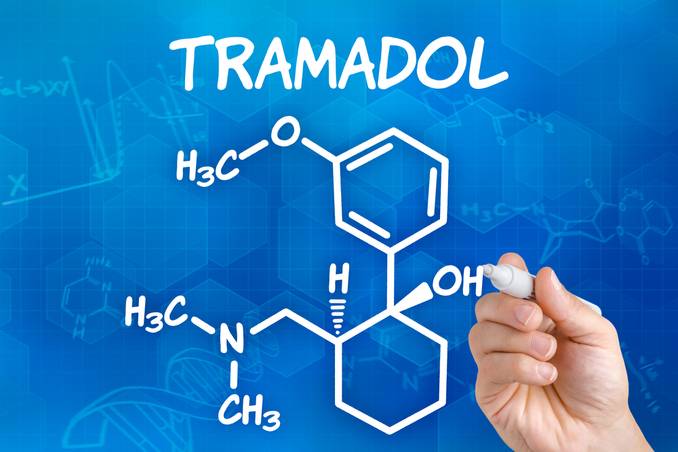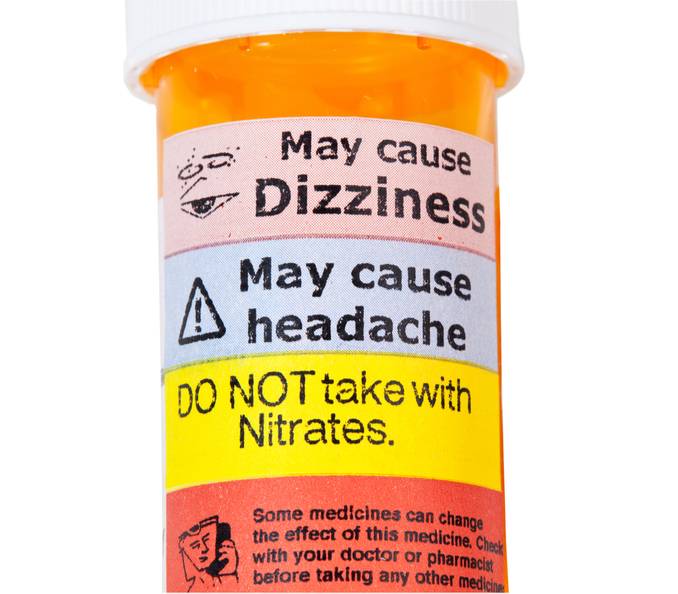Tramadol oral tablets are prescribed in both immediate-release and extended-release tablets. Tramadol also comes in an extended-release oral capsule. When you take the immediate-release tablet, the drugs are released into your body right away. Extended-release drugs are released into the body slowly over time. This is important to consider for the onset of tramadol side effects.
The most common Tramadol side effects include dizziness, headache, drowsiness, nausea, and vomiting, constipation, lack of energy, sweating, and dry mouth. Despite this extensive list, there are many other side effects as well.
Tramadol can also be found as the brand name Ultram. Generic drugs can cost less but are the same type of drug, just available in different forms.
Who Uses Tramadol?
Table of Contents
Tramadol is used to treat moderate to severe pain. It may also be used as part of combination therapy. This means you may need to take it with other medications.
Tramadol belongs to a class of drugs called opioid agonists. This class of drugs is a group of medications that work in a similar way. These drugs are often used to treat similar conditions. It changes how your brain senses pain. It is similar to the substances in your brain that are called endorphins.
It then stimulates these endorphins which then bind to receptors of your brain. These are the parts of cells that receive a certain substance. The receptors then decrease the pain messages that your body sends to your brain. Tramadol works similarly. It helps to decrease the amount of pain your brain thinks you’re having.
Tramadol Side Effects
There are a whole host of side effects that come with using tramadol, the following are the most commonly documented symptoms.
- constipation
- nausea
- dizziness
- vertigo
- headache
- drowsiness
- vomiting
- agitation
- anxiety
- mood swings
- euphoria
- hallucinations
- nervousness
- muscle spasms or stiffness
- indigestion
- weakness
- itching
- diarrhea
- dry mouth
- sweating
- feeling unwell
- menopausal symptoms
- rash
- urinary frequency
- urinary retention
- dilation of blood vessels
- visual disturbances
- abnormal gait
- amnesia
- cognitive dysfunction
- depression
- difficulty in concentration
- feeling uneasy
- painful urination
- fatigue
- menstrual dysphoric disorder
- motor system weakness
- numbness and tingling
- seizures
- suicidal tendencies
- fainting
- fast heart rate
- tremors
- swelling
- cough
- flushing
- high blood pressure
- low blood pressure
- reduced blood flow to the heart
- palpitations
- hives
- withdrawal syndrome
- life-threatening respiratory depression
- neonatal opioid withdrawal syndrome
- adrenal insufficiency
- abdominal pain
- serotonin syndrome
- severe allergic reaction
- androgen deficiency
Risks Associated With Tramadol
There are a few main risks associated with Tramadol:
- Addiction and misuse
- Slowed or stopped breathing
- Accidental ingestion
- Life-threatening effects for children
- Neonatal opioid withdrawal syndrome
- Interactions with certain drugs
- Interactions with benzodiazepines
Life-threatening Effects for Children
In some cases, children can process Tramadol too easily. This can eventually lead to slowed breathing or death. This is why the drug should not be used in children younger than 12 years of age, and occasionally, children under 18 with risk factors.
Neonatal Opioid Withdrawal Syndrome
If you are pregnant and you use Tramadol you may cause withdrawal to your baby. This can lead to death and it is important that you try to get off of the drug before getting pregnant, or after finding out you are carrying. Symptoms of withdrawal in an infant include irritability, hyperactivity, unusual sleep patterns, and a high-pitched cry. They can also include tremors, vomiting, diarrhea, and failure to gain weight.
Interactions With Certain Drugs
If you take Tramadol with certain drugs it can cause different effects. These chemical interactions can produce more than typical Tramadol side effects alone and are dangerously unpredictable. Some combinations might increase the tramadol levels leading to seizures and serotonin syndrome. Not only that, but they will also reduce the effectiveness of tramadol, as well as increase opioid withdrawal symptoms. Interactions with other drugs occur with:
- Amiodarone
- Quinidine
- Erythromycin
- Ketoconazole
- Ritonavir
Interactions With Benzodiazepines
Taking tramadol with benzodiazepines or similar drugs can cause devastating effects. These effects can include severe fatigue, slowed breathing, coma, or even death.
Addiction, Abuse, and Misuse
Tramadol hydrochloride exposes patients to the risk of opioid addiction, abuse, and misuse. This is the worst side effect of tramadol, as it can lead to overdose and death. Before being prescribed tramadol your doctor will assess your risk factor. You will then be monitored regularly for the development of addiction, abuse, or misuse.
How to Avoid Addiction and Abuse
To ensure that the benefits of opioid analgesics outweigh the risks of addiction, opioid analgesic risk evaluation and mitigation strategies have been implemented. This was done by the Food and Drug Administration and has required a REMS for these products. Under the requirements of the REMS, drug companies must create educational programs for health care providers.
In order to avoid giving patients medication that they may become addicted to, healthcare providers are strongly encouraged to complete a REMS-compliant education program. They should also counsel patients and caregivers on every prescription. This should be discussed regarding safe use and risks, as well as storage and disposal.
Respiratory Depression
Serious, life-threatening, and even fatal respiratory depression can occur by using tramadol hydrochloride. You must monitor for respiratory depression when Tramadol is first used, and also when the dose is increased. Tramadol should be swallowed fully, and never be:
- Cut
- Broken
- Crushed
- Chewed
- Dissolved
This can cause exposure to a potentially fatal dose of Tramadol.
Accidental Ingestion and Tramadol Side Effects
Accidental ingestion is completely possible, and when this occurs, especially with children, it can easily result in a fatal overdose of Tramadol.
Understanding Addiction as a Whole
Substance use disorders are another name for an addiction to drugs. Substance use disorders are a condition in which there is the uncontrolled use of a substance. This is always despite harmful consequences and is usually detrimental to the life of the addicted person.
If you have a substance use disorder, you will most likely use alcohol, tobacco, prescription, or illicit drugs, such as tramadol. This will be to the point where your ability to function is impaired. You may continue to use the substance even if they know it is causing problems or will cause problems. The most severe substance use disorders are called addictions.
Distorted Feelings and Behaviors
If you have a substance use disorder you may have distorted thinking and behaviors. This comes from the changes in the brain’s structure and function. These changes are what cause you to have
- Intense cravings
- Changes in personality
- Abnormal movements
- Other behaviors
In addition, brain imaging studies have shown changes in the areas of the brain that relate to judgment, decision making, learning, memory, and behavioral control.
Intoxication and Repeated Substance Abuse
Intoxication is defined as:
- Pleasure
- Euphoria
- Calm
- Increased perception and sense
It may also include other feelings that are caused by the substance. Despite this, intoxication symptoms are different for each substance. Intoxication often leads to repeated substance use. This changes how your brain functions and these changes may continue even after the immediate effects wear off. When struggling with addiction, you will build up a tolerance to the substance of use. This means that to will need a larger amount of the drug to feel the effects.
Why Addiction Occurs
- In order to feel good, and have a feeling of pleasure, “high” or “intoxication.”
- To feel better or to relieve stress, forget problems, or feel numb.
- To do better and improve performance or thinking.
- Out of curiosity and peer pressure or experimenting
Being Aware of the Addiction
If you struggle with an addiction or substance use disorder, you may be aware of the problem. You may not even be able to stop if you wanted to. Your addiction can also cause physical and psychological problems, leading to interpersonal problems. Alcohol and drug use is one of the leading causes of preventable illnesses and premature death nationwide.
Tramadol Addiction
Known primarily as a painkiller, Tramadol users are at risk for major abuse. For many years Tramadol was thought not to be addictive. This has led it to be prescribed much more heavily than some other opioid painkillers.
If you are starting to use Tramadol you may not know the addictive potential of the drug and the risks that occur with abusing tramadol. Although you can understand this drug can help you, it is also essential that you understand the risks and challenges of using or abusing this drug.
Tramadol Abuse
Tramadol abuse has become very common. Even though the purpose of this drug was to be a less addictive opioid analgesic, it is far from the case. Among opioid abusers, tramadol creates a craving response. This is almost the exact same as that with oxycodone, which has incredible addictive potential.
Because of the abusive potential of tramadol, people who are addicted to stronger opioid medications have also become addicted to tramadol. This shows that Tramadol can induce drug-seeking behavior, and it has the potential for you to develop tolerance. Then, dependence, and addiction can follow.
Dependence on Tramadol
It was found that tramadol potentially affects the GABA system in the brain. GABA is a neurochemical pathway that can decrease neuron activity by decreasing the production of dopamine. This can be affected when it comes to substance abuse. It is known as one of the most powerful reasons for addiction.
When someone has a mild form of dependence it may show itself in a different form than someone with a strong dependence. Some people have shown a strong tendency toward physical and mental dependence, which ultimately leads to addiction to tramadol. Having a prior history of substance abuse can contribute to cases in which tramadol addiction becomes a problem.
Withdrawal From Tramadol
Withdrawal from tramadol can result in an extremely uncomfortable syndrome. This is often referred to as a discontinuation syndrome. When you stop using tramadol, symptoms may arise such as:
- Anxiety
- Tremors
- Insomnia
- Depression
- Hallucinations
- Shivering
- Aggression
- Flu Like symptoms
- Tingling
Withdrawal from tramadol can be extremely uncomfortable and disturbing. Unfortunately, because tramadol is sometimes considered to be safe, some medical professionals do not offer a good regimen for tapering off the drug. This causes worsened detox systems and can be dangerous as well.
13 Principles of Drug Addiction Treatment
There are 13 principles of effective drug addiction treatment. These were developed based on decades of scientific research. Research shows that treatment can help those addicted to tramadol, stop using, as well as learn to avoid relapse and recover lives. The 13 principles of drugs addiction treatment include:
- Addiction is complex but treatable. It affects brain function and behavior.
- No single treatment works for everyone.
- Treatment needs to be readily available.
- Effective treatment needs to tend to multiple needs of the individual, not just his or her drug abuse.
- Remaining in treatment for a period of time long enough to provide enough treatment for sobriety.
- Counseling is essential and one of the most commonly used forms of drug abuse treatment.
- Medications are also an important element of treatment for many patients.
- An individual’s treatment and services plan must be assessed continually and changed based on the new needs of the individual.
- Many times other mental disorders are present when it comes to drug-addicted persons.
- Medically assisted detox is only the first stage of addiction treatment.
- Treatment does not need to be voluntary to be effective.
- Drug use during treatment must be monitored continuously, as lapses during treatment do occur.
- Treatment programs should assess patients for the presence of HIV/AIDS, hepatitis B and C, tuberculosis, and other infectious diseases.
Getting Help for Tramadol Addiction
Although some substances are abused for recreational reasons, there are research-based treatment programs that provide therapies and other support. These can help you to learn and recognize your triggers for cravings that lead to abuse. Treatment is the only possible way to learn how to substitute other behaviors, and reduce the likelihood of relapse to tramadol abuse.
Common therapies include:
- Cognitive Behavioral Therapy
- Motivational Interviewing
- Family and social therapy
- Peer support group participation
- Experiential therapy to manage mental conditions that contribute to addiction
- Exercise, nutrition, and other supportive treatments
Going through these therapies can help you to learn and cope with the symptoms of addiction, eventually making it possible to stop using tramadol and achieve long-term sobriety.
Brandon is a highly skilled content writer and behavioral health marketer with over a decade of experience. In his own words: in my work with Find Addiction Rehabs, I have dedicated my expertise to a cause close to my heart – substance abuse recovery. Through my passion for the field, I’ve successfully compiled a track record of crafting compelling content that educates, inspires, and supports those on their recovery journeys.







